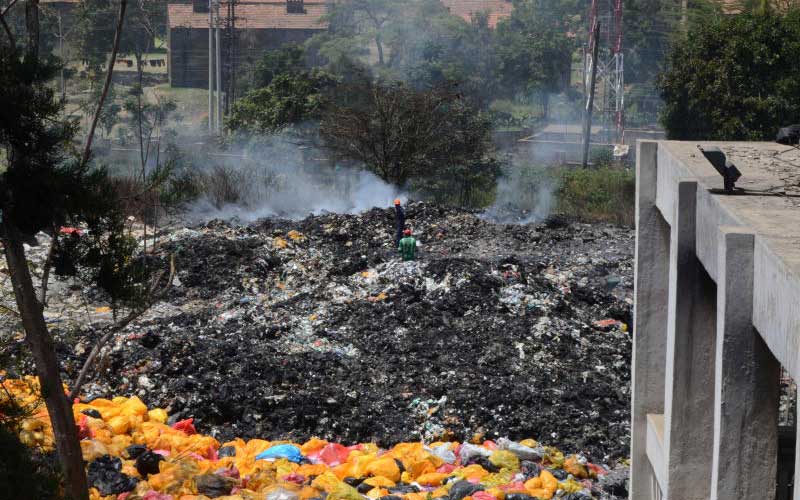
At least seven million people die prematurely each year from diseases caused by air pollution, the World Health Organisation (WHO) has said.
In its Global Assessment Report on Disaster Risk Management 2019, released on Friday, shows 800 people die every hour (13 every minute), because of the dirty air they breathe.
About 4 million of the deaths occur in the Asia-Pacific region.
As the world prepares to celebrate World Environment Day on Wednesday, the report exposes how threats such as air pollution, diseases, earthquakes, drought and climate change combine and feed on each other to exacerbate their impact on human health and the environment.
Air pollution is the theme for World Environment Day to be marked on June 5.
“People and assets around the world are being exposed to a growing mixture of hazards and risks, in places and to an extent previously unrecorded. Heatwaves mixed with drought conditions can trigger intense wildfires that cause high levels of air pollution,” says the report.
The report shows that as one of the most significant environmental hazards after climate change, air pollution contributes to the global burden of disease through atmospheric concentrations of greenhouse gas emissions and their precursors, particulate matter, heavy metals, ozone and associated heatwaves.
Natural disasters
It also details five ways in which disasters, natural or industrial, can either cause or exacerbate air pollution.
The reports says natural disasters in urban areas trigger technological accidents as industries and storage sites can see damages to pipelines, storage tanks, and processing equipment, which can, in turn, result in the release of hazardous materials.
An example is the 2011 disaster at the Fukushima Nuclear Power Plant in Japan, where a 15-metre tsunami disabled the power supply and cooling of three Fukushima Daiichi reactors.
Disasters also facilitate release of hazardous material. When paints, solvents and other chemicals stored in households, or fuel stored in industrial tanks catch fire, they affect large areas and numbers of people.
In 2015, slash-and-burn practices, on the Indonesian islands of Sumatra and Kalimantan, triggered forest fires, which then spread quickly in the dry season. The toxic haze travelled around the region, triggering long-lasting air pollution crises in several Southeast Asian countries.
The report says disasters are responsible for increased release of accumulated pollutants, as pollutants are usually released into the environment through cycles that flow between air, land and water, until they are buried in lakes or deep ocean sediments. However, wildfires, floods, volcanic eruptions, tsunamis or earthquakes can release these elements suddenly and in large quantities.
Geothermal activity, for example, can cause methylmercury - a highly toxic form of mercury found in aquatic environments - to be released into the air. When inhaled, the reports shows, mercury vapour affects the nervous, digestive and immune systems, lungs and kidneys, and may be fatal.
Disasters are also a breeding ground for airborne microbes and mold as still flood waters teem with microbes. When picked up by the wind, the bacteria can enter people’s airways and cause lung disease. The contaminants and microorganisms left behind after a flood also pose health risks. Dust mites, microorganisms, mold and cockroaches thrive in damp buildings and furniture, and aggravate asthma, allergies, wheeze, cough and hypersensitivity pneumonitis.
According to the report, increased drought promotes sandstorms that in turn affect millions every year. In the 1930s, the report says, intense droughts in the southern Great Plains of the US led to the infamous dust storms that gave the “Dust Bowl” region its name. The devastation these dust storms cost the agricultural sector is thought to have helped lengthen the Great Depression. In March 2018, a thick sandstorm engulfed Khartoum, forcing authorities to cancel flights and shut schools.
 The Standard Group Plc is a multi-media organization with investments in media platforms spanning newspaper print
operations, television, radio broadcasting, digital and online services. The Standard Group is recognized as a
leading multi-media house in Kenya with a key influence in matters of national and international interest.
The Standard Group Plc is a multi-media organization with investments in media platforms spanning newspaper print
operations, television, radio broadcasting, digital and online services. The Standard Group is recognized as a
leading multi-media house in Kenya with a key influence in matters of national and international interest.











